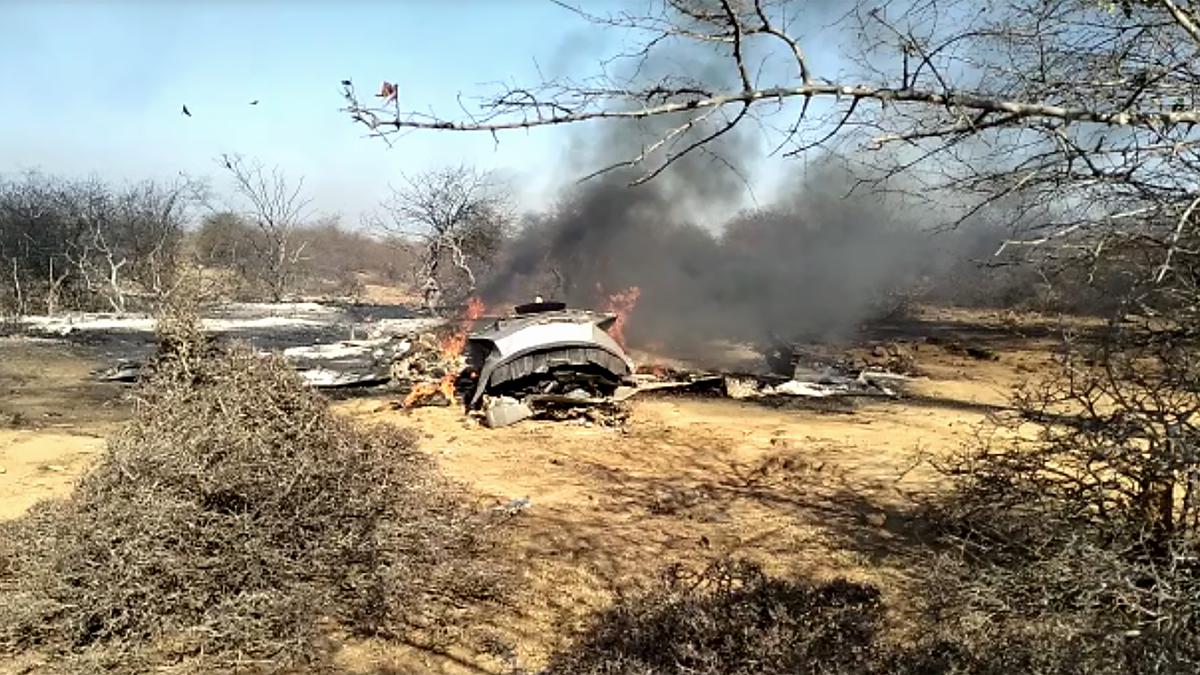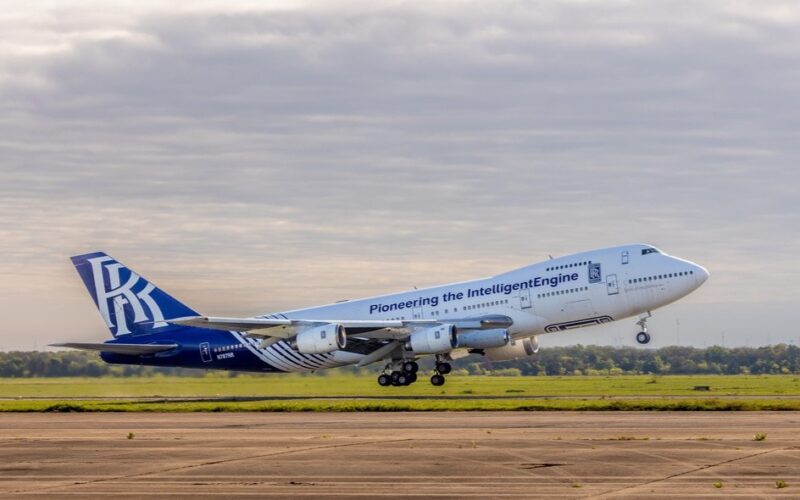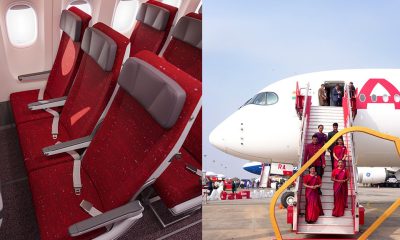Aerospace
IAF’s Sukhoi-30, Mirage-2000 crash near Madhya Pradesh’s Gwalior; one pilot dead

Two Indian Air Force fighter jets collided in midair, according to press reports from India. The aircraft was participating in defense exercises when it lost control after possibly colliding with another aircraft’s wing.
Two fighter jets, a Sukhoi Su-30 and a Mirage 2000, crashed on Saturday near Gwalior in Madhya Pradesh, killing one Indian Air Force pilot. The pilot of the Mirage passed away after being critically wounded in the collision, while the two Su-30 pilots only suffered minor wounds.
The wreckage of the wrecked plane was discovered in Morena, Madhya Pradesh, and Bharatpur, Rajasthan.
Two pilots on a single Sukhoi were saved successfully, and the remains of a third pilot were discovered. Which aircraft pilot perished in the mid-air accident is still a mystery.
“This morning, an IAF mishap involving two fighter aircraft occurred close to Gwalior. The plane was engaged in a routine operational training flight mission. Three pilots were involved, one of whom suffered fatal injuries. To find out what caused the mishap, a probe has been ordered “IAF stated.
#BreakingNews
Two #IAF planes crashed in #Morena, MP and a chartered plane crashed in #Bharatpur, #Rajasthan. Aviation accidents are not so common, what went wrong?#planecrash#Mirage2000#pilots pic.twitter.com/ZLtn8OfgUC— World conflicts Monitoring Center (@WorldBreakingN9) January 28, 2023
About Dassault Mirage 2000
The Dassault Mirage 2000 is a fourth-generation jet fighter with a single engine that is made by Dassault Aviation in France. It had its first flight in 1978 and joined the French Air Force service in 1984. Since the 1980s, the Mirage 2000 has been flown by the Indian Air Force (IAF).
It has been deployed in a variety of conflicts, notably the 1999 Kargil War in India, in both air-to-air and air-to-ground missions. In reaction to a terrorist incident in India in February 2019, the IAF employed Mirage 2000 aircraft to carry out airstrikes in Pakistan. The Tejas, a locally produced aircraft, will gradually replace the Mirage 2000 in the Indian Air Force.
About Sukhoi Su 30
The Sukhoi Su-30 is a twin-engine, two-seat, multi-role fighter aircraft developed by Russia’s Sukhoi Aviation Corporation. It is a long-range air superiority fighter and is considered one of the most advanced aircraft of its kind in the world. The Indian Air Force (IAF) has operated the Su-30MKI variant since 2002. It is a heavily-modified version of the Su-30, developed specifically for the IAF.
The Su-30MKI is capable of air-to-air and air-to-ground missions and is equipped with a variety of weapons, including air-to-air missiles, bombs, and a 30mm cannon. It also has advanced avionics, including a multi-mode radar and a jamming system.
The Su-30MKI has played a significant role in the IAF’s operations, including during the 1999 Kargil War with Pakistan. The IAF has more than 200 Su-30MKI aircraft in service and is the mainstay of the Indian airforce and will continue to serve in the next decade as well.
#Bharatpur
A fighter aircraft crashed in Bharatpur’s Nagla Dida in Rajasthan on Saturday.#planecrash pic.twitter.com/pvBho4lN6S— Rachit Arora (@rachitarora29) January 28, 2023
During the crash, the Su-30 had two pilots while the Mirage 2000 only had one. Initial reports indicate that both pilots are secure, and IAF helicopter is en route to the third pilot’s location, according to defense sources.
Due to a large number of locals there, it was difficult to identify the debris that had fallen 150 feet, making this a highly rare catastrophic event in Indian aviation history. Both pilots were taken to the hospital for additional treatment. India also intends to replace all of its Mirage aircraft with Tejas Innovative aircraft by the year 2025.
In order to determine whether or not there was a mid-air collision, the IAF has requested a court of inquiry. During the crash, the Su-30 had two pilots while the Mirage 2000 only had one. Initial indications indicate that two pilots are safe, while an IAF chopper is en route to the third pilot’s location, according to defense sources.

Aerospace
China Secures Production Certificate for Mass Production of Pilotless eVTOL Aircraft

The first passenger-carrying pilotless electric vertical takeoff and landing (eVTOL) aircraft in the world, the EH216-S, has received the Production Certificate for its eVTOL aircraft from the Civil Aviation Administration of China (CAAC).
This is a significant milestone for EHang Holdings Limited, the leading UAM technology platform company in the world. This outstanding accomplishment is another big step towards mass manufacturing for the eVTOL aircraft and the ensuing commercial operations, building on the ground-breaking acquisition of the Type Certificate and the Standard Airworthiness Certificate for the EH216-S.
The PC is a crucial certificate that the aircraft maker receives from the CAAC, the country’s aviation authority. By obtaining this certificate, EHang has demonstrated that it has set up a quality management system for mass production that satisfies the airworthiness regulation standards set forth by the CAAC, and the company has been given permission to continue producing mass quantities.
It is also a strong guarantee of the calibre of the goods made by EHang. Raw materials, supplier management, manufacturing organisation, production quality control, aircraft pre-delivery test, after-sales repair and maintenance, etc. are all included in the mass production quality management system for the EH216-S.
To ensure that every aircraft and its components that roll off the production line strictly adhere to the approved type design and safety requirements, the system sets clear guidelines and documentation for every step in the production procedure. This ensures comprehensive traceability and safety control.
Aerospace
Four Airbus A380 Superjumbos lined up to be scrapped

In a strategic move aimed at reclaiming valuable resources from the iconic Airbus A380 aircraft, VAS Aero Services and Dr. Peters Group have announced a significant collaboration.
This partnership marks a milestone in aviation logistics and aftermarket services, with four of these colossal planes slated for teardown and redistribution of used serviceable material (USM).
The venture between VAS Aero Services, renowned for its expertise in aircraft dismantlement, and Dr. Peters Group, a prominent Germany-based investment fund management firm, underscores a commitment to sustainable aviation practices. This isn’t their first foray into scrapping A380s; their successful partnership has already seen the dismantlement of these aircraft, making them pioneers in this niche.
Under the agreement, the latest consignment brings the tally to eight A380s entrusted to VAS by Dr. Peters Group. Managing Director Christian Mailly of Dr. Peters Group emphasized the trust placed in VAS, citing their unparalleled capabilities in dismantlement and aftermarket sales network. It’s a strategic move in response to the growing demand for quality USM parts, particularly with the resurgence in reliance on the A380.
Notably, the teardown process will be carried out at various locations, optimizing the positioning of harvested parts to cater to different markets. While some parts will be positioned in Europe to support operators in the region and the Middle East, others will remain in the Asia-Pacific region. This meticulous strategy ensures efficient access to spare parts, benefiting MROs and airlines across these markets.
The decision to retire these A380s comes at a time when operators are reassessing fleet strategies amidst evolving market dynamics. Despite initial plans for quick retirement due to the emergence of more fuel-efficient alternatives, factors such as a rebound in long-haul demand and delays in new widebody deliveries have prompted operators to reconsider. The A380, with its unique capacity and capabilities, presents a practical solution for short-term capacity management.
Aerospace
Rolls-Royce Launches Test Flights for Revolutionary Pearl 10X Engine

Rolls-Royce reports that the company’s dedicated Boeing 747 flying testbed has seen the successful start of the Pearl 10X, their newest aero engine designed for the business aviation industry.
Dassault, a French aircraft manufacturer, has decided to use this engine only to power their newest flagship, the Falcon 10X. As stated at last year’s Capital Markets Day, the commencement of flight testing represents a significant milestone for both Rolls-Royce and the Pearl 10X programme as the company concentrates on expanding in the business aviation industry.
The first Rolls-Royce engine to power a Dassault business jet is the Pearl 10X, the newest engine in the state-of-the-art Pearl engine family. The Pearl 10X was chosen by the French aircraft manufacturer as their new flagship model, demonstrating even more of Rolls-Royce’s dominance in the business aviation engine market.
Over the next few months, pilots and flight test engineers from Tucson, Arizona, USA, will put the engine through its paces. The flight test programme will comprise testing of the nacelle’s anti-icing system, in-flight relights, engine performance and handling checks at various speeds and altitudes, and fan vibration tests at various altitudes.
The new auxiliary gearbox, which enables higher additional power extraction, and the ultra-low emissions ALM combustor, which is compatible with 100% Sustainable Aviation Fuel (SAF), have undergone extensive testing as part of the ground-based development programme thus far. The engine will be the most potent business aviation engine in the Rolls-Royce lineup. It exceeded its intended thrust levels during the very first test run. With over 2,300 testing hours successfully completed on the Pearl 10X engine configuration as well as the Advance 2 demonstration, the programme is moving forward at a rapid pace.
With the most economical engine core available for business aircraft, the Advance2 engine, coupled with a high-performance low-pressure system, gives the Pearl 10X an exceptional thrust of over 18,000 lbf. With a 5% increase in economy over the previous generation of Rolls-Royce commercial aviation engines, the Pearl 10X





















